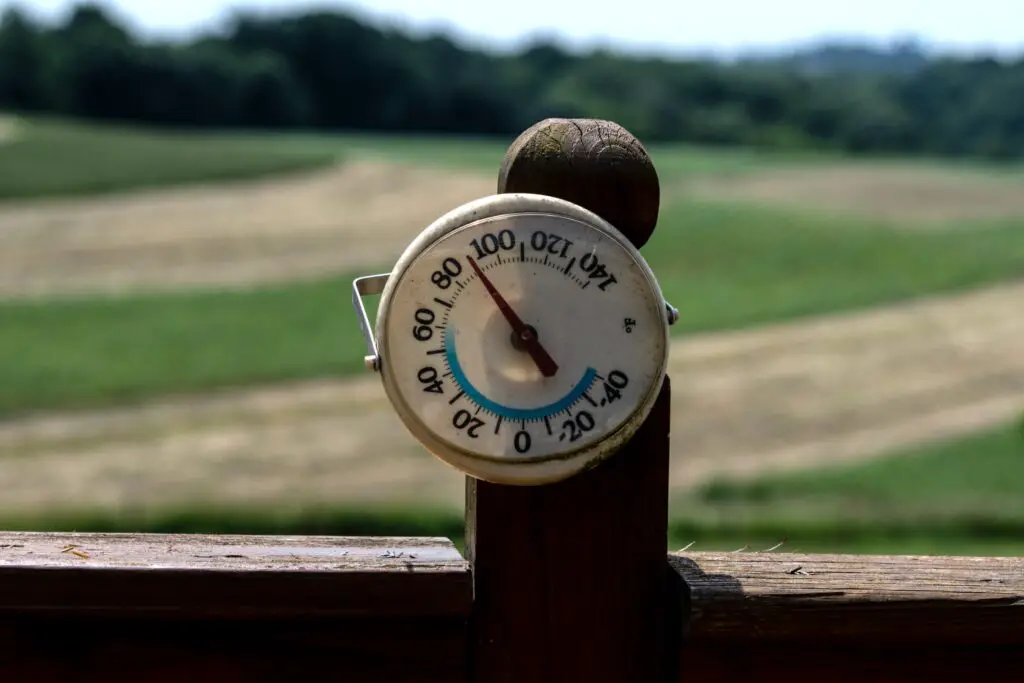The lake or pond water becomes warm on summer days, sometimes reaching above 90°F. In many places, we see catfish and other fish die and float in the water. Fish breathe and disperse oxygen from water. Water gets this oxygen from wind and waves on the water’s surface. Plants underwater, like algae and phytoplankton also produce oxygen when they get sunlight. This process is called photosynthesis. So, from the wind and underwater plants, water gets oxygen.
Fish may die in water if the water temperature goes up. Hot water contains less dissolved oxygen because warm water is less dense. If the water becomes hot, the catfish will die of a lack of oxygen. It can happen in rivers, lakes, or ponds. Even if the temperature gets warmer in the tank, they will die. In warm water, fish become restless. Fishes’ metabolisms increase in warm water, and they become more active and need more oxygen, but warm water cannot hold much oxygen and cannot support enough oxygen for the fish. Catfish become sick, and sometimes they die.
The normal range of water temperature for catfish is 70 to 81 degrees Fahrenheit (23-27 degrees Celsius), but they will not survive if the water is above 90 degrees Fahrenheit for very long.

What are the Issues which Lead to a Catfish Dying?
Commonly, fish or any creature will die in boiling water, but they also die in naturally warm water. Minimum sunlight is one of the main reasons for the death of catfish. Underwater plants need sunlight to perform photosynthesis. The photosynthesis process stops at night and slows down on cloudy days. During these times plants could not produce enough oxygen. The oxygen level becomes lower, and it results in dead fish, if this were to go on for too long of an extended period.
If the number of floating plants increases, the sunlight cannot pass through the water. Then the algae and phytoplankton die without sunlight, and oxygen production stops. After the death of those plants, the decomposition starts, the water becomes very dirty, and the oxygen level drops. This is also the main reason for dead fish in ponds and lakes. Dead algae produce toxins and kill fish. Stormwater is also a cause of water oxygen lower levels. A storm brings grass, hay, leaves, and pollutants into the water. Microorganisms start to decompose these unwanted materials, and decomposition creates oxygen defects.
Why Water Loses its Quality and Damage Fish Health?
Any water containing a large amount of silt, clay, or microscopic organisms becomes turbid. In turbid water, the photosynthesis process decreases which makes the oxygen level not adequate for fish. The turbid water is warmer than clear water, which can hold more heat. Turbid water cannot hold much oxygen. Clay is a very heavy element for water. Fish gills become coated with clay which can lead to suffocation.
The temperature of the water and the freshness of the water are co-related. Fish can live in freshwater where the ecosystem is maintained purely. High temperatures and unfavorable water damage marine life and lead to catfish dying.
Catfish Behavior in Different Water Temperature
Catfish are cold-blooded fish. It indicates that its body follows the water temperature which are they are in. Different temperatures have different activities. If the temperature changes very fast, they cannot adjust to it and start suffocating and may die. Catfish are very sensitive to water temperature.
In a warmer season, like 50°F to 60°F, catfish behave vigorously and feed harder. At this time, people catch the greatest number of catfish, because when fish are playful and feed hard, it is easy to catch them. At this temperature, they start to pre-spawn.
When the temperature hits 70°F, they start to spawn. Their fall behavior starts when the water temperature becomes 50°F. This time they become bulky as they eat much in this season for the coming winter and start to live in deeper water.
In the winter season, they become inactive. Do not swim at the upper level. Try to hide in the logs or rocks in the bottom part of the sea, but in comparison, catfish are more active in winter than other fish.
There are three types of catfish available in the USA. Blue, channel, and flathead catfish. They are very different in their behavior. Channel and blue catfish are scavengers, which means they are not predators. The baby catfish eat crayfish, worms, and invertebrates. In the spawning season, the male catfish finds the nest (logs or undercut banks). They prepare the nest to lay eggs with mud and then, the female lays eggs. Here the temperature is also very important because when the water is warm, about 75°F, they start laying eggs. A female catfish lays almost 50000 eggs in one season. Catfish spawn once a year. These are common for all three types of catfish.
How Catfish Cope with Temperature Change
Climate change is a problem for all living species. Many years a heat wave strikes the USA, and the death of fish is increasing. Too much heat or too cold weather makes them uncomfortable. Fish cannot live if the water temperature is above 90°F. At this temperature, a large amount of water evaporates with oxygen, which results in less oxygen in the water. Catfish can live in warm and cold water, but if the season changes and the water start to change in temperature, the fish try to move from colder water to warmer water. In the summer season, from high temperature water to less warm water. If the temperature changes too abruptly, they cannot move from there fast enough and become sick.
In the wild fish try to move from high-heated areas to low-heated areas. If the upper level is warmer, they will start living at the bottom. In an aquarium, they could not escape from unpleasant temperatures. The owner of an aquarium needs to balance the aquarium’s temperature with the environment. In the colder seasons, one can place the tank near a heater. You can also buy a tank heater, and in the warm season, you should try to keep them in an air-conditioned area.












Pingback: Differences Between Catfish and Trout | Reel Fishing Guru